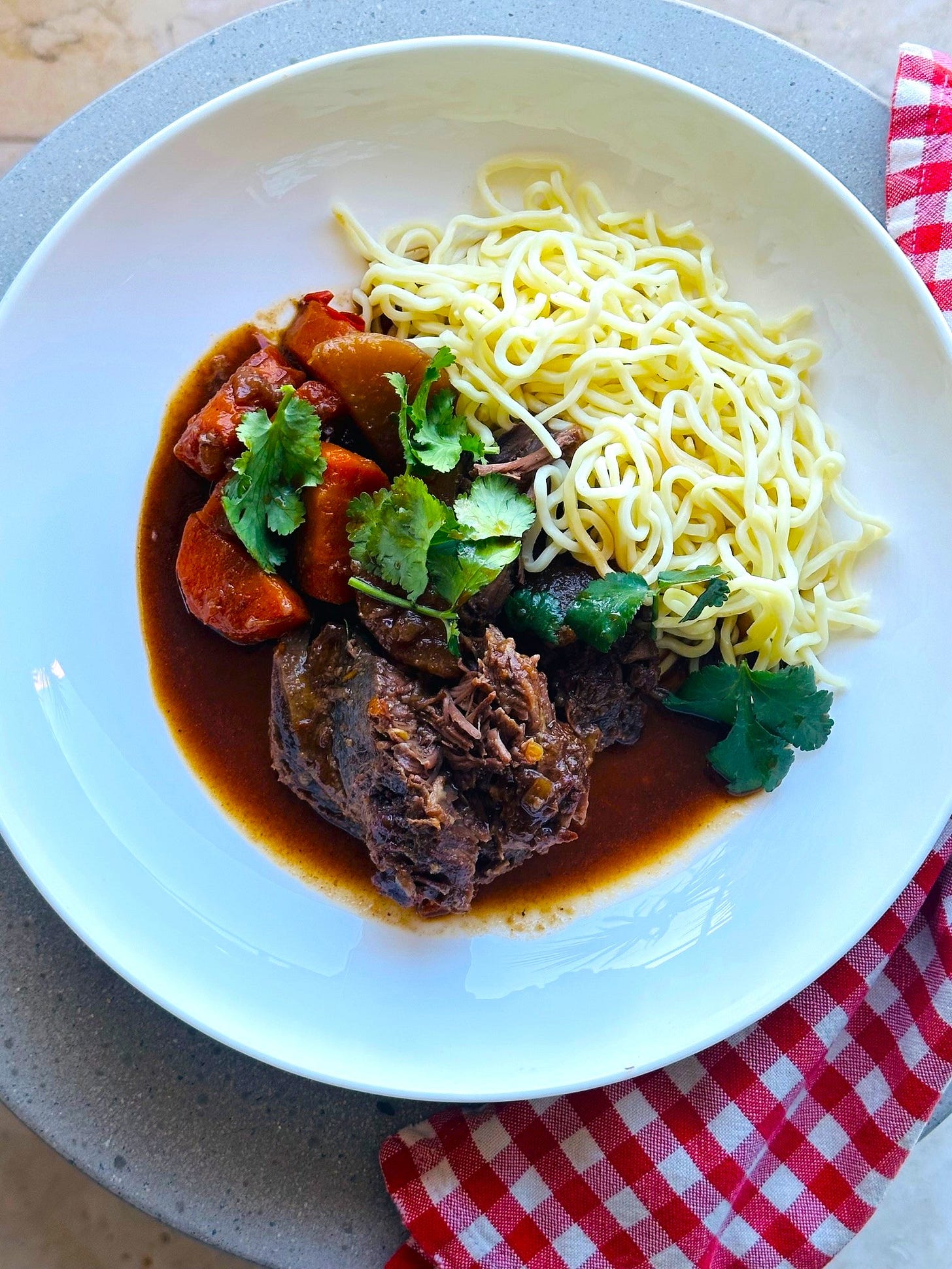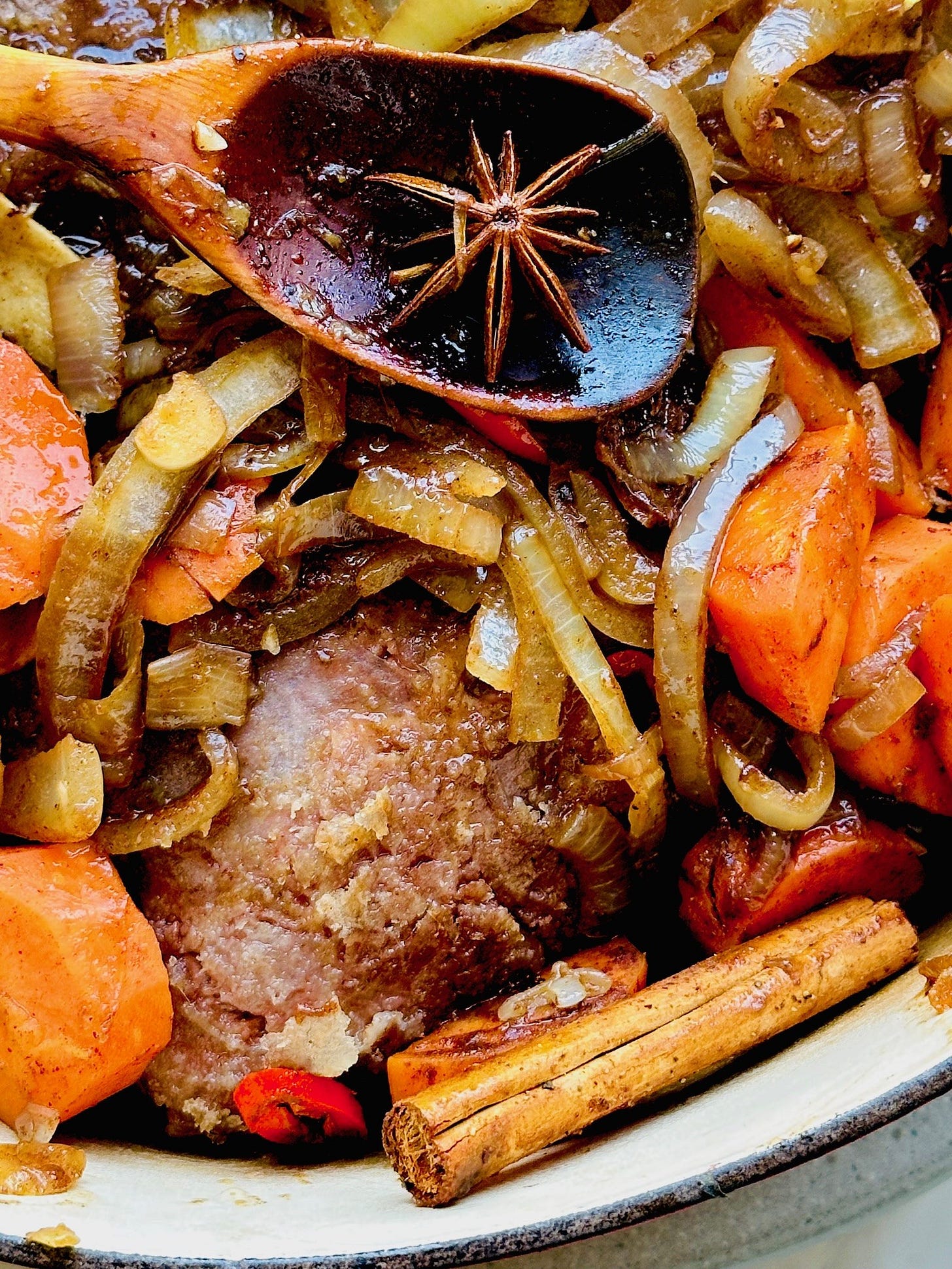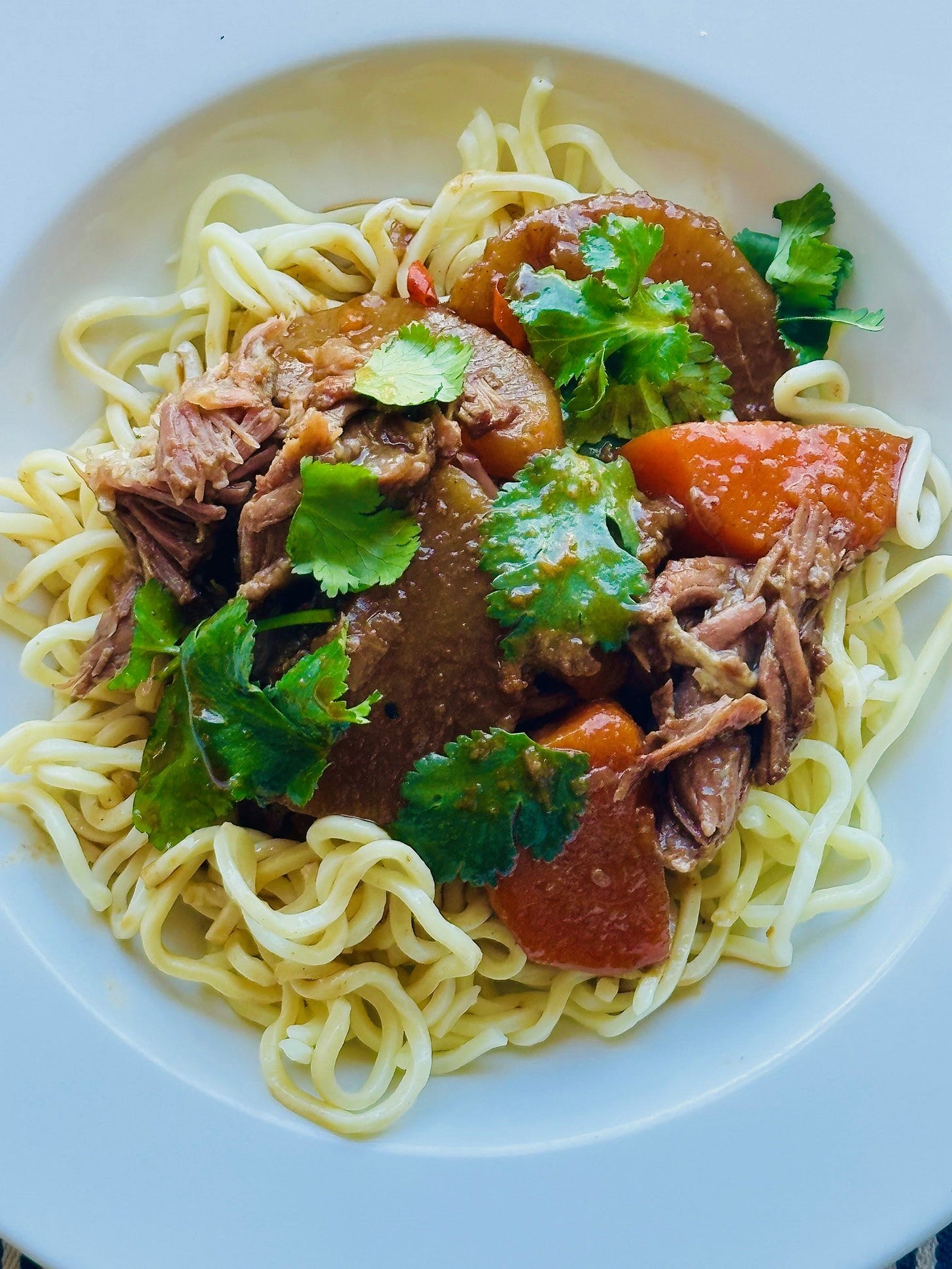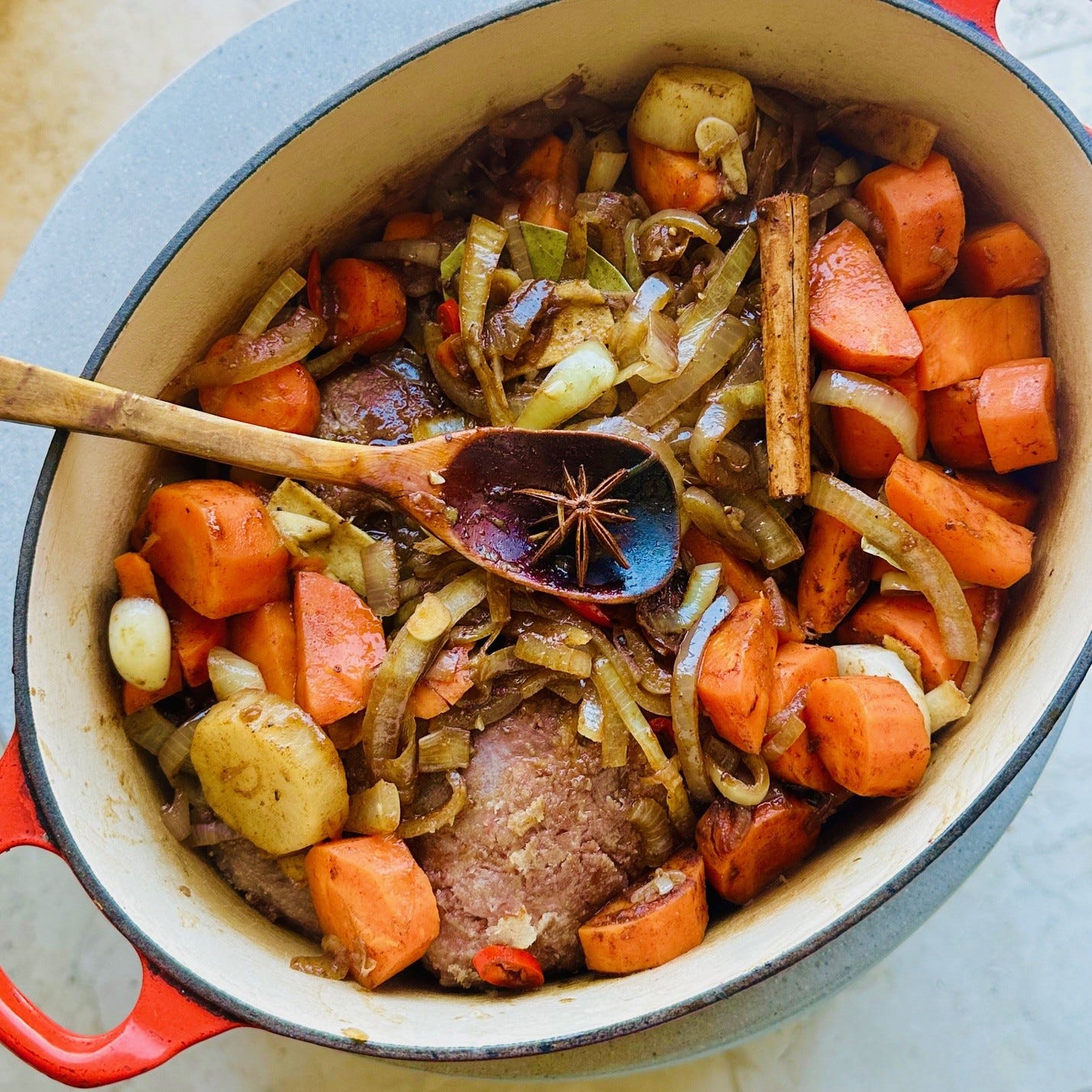Suddenly, it’s hot porridge and pears for breakfast at home instead of mortadella and focaccia in Italy; extra hot caffe latte instead of cappuccino freddo; buttered silverbeet instead of a platter of ripe red tomatoes, and slow-braised beef cheeks instead of trofie with Genovese pesto.
I can dig it. What we feel like eating is a visceral response to the conditions in which we find ourselves. It never pays to go against your instincts. Doing so is like walking straight into a giant rubber band – it will let you go a few steps, and then kapow – catapult you to way back to before you were when you started. A tortuous metaphor, but I think you get my drift.
Now that it’s July, that 40 minute walk around the harbour to sit under an umbrella by the water for coffee looks like an act of insanity. My usual Friday lunch of sushi has moved to a bowl of udon noodle soup instead. I’ll stick with green salads throughout winter, but they’ll be bitter leaves, with hotter mustard and sharper vinegar in the dressing.
And now my mind has turned to beef cheeks, which I can’t say it has done since the last time I had to find the bed socks. There is no summer iteration of this gelatinous, fibrous, meaty muscle, after all; no beef cheek crudo, nor chilled beef cheek soup or salad. Cheeks need long, slow cooking to be edible, much less painfully delicious, and who wants to do long, slow cooking when it's 35 degrees Celsius?
Ah, but when you’re ensconced in your new Peter Alexander loungewear, have fluffy slippers on your feet, and find the oven is a source of heat as well as a source of dinner, that’s beef cheek season.
This recipe borrows from Vietnam’s bo kho, fragrant with ginger, garlic, cinnamon, star anise and five-spice. It’s often made with beef short ribs – no reason you couldn’t do the same. Also consider including lemon grass, a touch of curry powder, or making up some of the stock quotient with coconut water, for a lighter touch.
Three hours cooking at 140C should do it. When you can press down on the cheeks with the back of a wooden spoon and they give like a cushion, they’re done. If not, give them another slow half hour or so.
Serve with noodles (ramen shown here), or rice, or ignore the Asian cues and serve with mashed potato anyway, if that’s what you most feel like.
There will be left-overs – pull them apart for a future pasta sauce, or pack them into a hearty pie. Winter ain’t over yet, folks, and we’ll be needing some ballast.
FIVE SPICE BEEF CHEEKS WITH GINGER AND GARLIC.
Serves 4.
1 kg beef cheeks, trimmed
2 tbsp cornflour or plain flour
2 tbsp vegetable oil
2 onions, halved and thickly sliced
3 garlic cloves, peeled and sliced
1 knob of ginger, peeled and finely sliced
half mild red chilli, finely sliced or roasted dried chilli flakes
3 carrots, peeled and thickly sliced
Half daikon, peeled, halved lengthwise and thickly sliced
2 tbsp Chinese rice wine or white wine
2 tbsp dark soy sauce
1 tbsp tomato paste
2 cinnamon sticks
2 star anise
1 tsp five-spice or ground cinnamon
Sea salt and pepper
1 tbsp brown sugar
Light stock or water to cover (eg 500 ml)
3 tbsp coriander leaves, roughly chopped
Heat the oven to 140C, and toss the beef cheeks in cornflour until coated.
Heat the oil in a pan and brown the cheeks well and remove.
Add a little extra oil and cook the onions for 10 minutes until softened.
Add the garlic, ginger and chilli and cook for 1 minute, tossing well, then add the carrot and daikon.
Add the rice wine and bring to the boil, then add the dark soy sauce, tomato paste, cinnamon sticks, star anise, five spice, salt, pepper and sugar.
Return the cheeks to the pan and add enough stock or water to just cover.
Bring up to a gentle simmer, then cover and cook in the oven for 3 hours.
Skim off any fat that you can, taste for savouriness, and serve with coriander.
If you’re feeling more like beef cheeks with bacon, herbs and red wine, go here, but if you like the idea of the warmth of ginger and garlic, the soft bite of daikon, and the savouriness of soy sauce, then stay.
Thanks for dropping by! And thanks for your comments and suggestions. Special thanks to Terry for supplying the ramen noodles from the stash he always seems to have to hand.
I would like to acknowledge the traditional owners of the lands and waters upon which I work, live, cook and play; the Gadigal people of the Eora Nation. Thank you for sharing your culture, traditions, knowledge, spirit, art, music, humour and food traditions, allowing us all to experience a sense of belonging in this ancient land.







try 110 celcius overnight. it will keep most of the house warm and the texture of the beef will please you
It’s on the shopping list for this weekend’s Saturday night slow food. Yum!